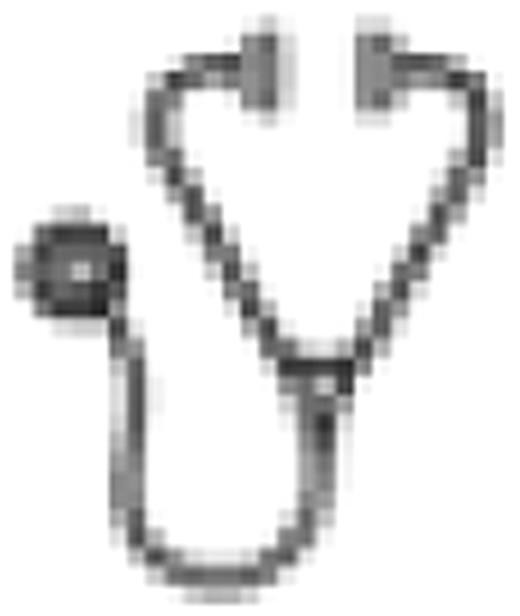Abstract
The prognosis of pediatric AML has improved considerably in the past decades, with overall long-term survival rates around 60%. This has been achieved by the more effective use of anti-leukemic drugs, improved supportive care and the use of risk-group stratification. A well-known prognostic factor is cytogenetics, and inv(16)(p13.1q22) or t(16;16)(p13.1q22) leading to the CBFβ-MYHII fusion gene and usually detected in AML FAB type M4, is associated with excellent outcome. However, information on cytogenetics is not always available due to lack of material, assay failures or limited resources. With that background, we retrospectively studied the association between morphology and cytogenetics in Dutch patients with newly diagnosed AML-M4, aged 0 to 18 years and treated uniformly with Dutch protocols, starting with SNWLK-ANLL-1982. Main study questions were the association between eosinophilia and inv(16)/t(16;16), and the correlation between these characteristics with other clinical and biological features on one hand, and with clinical outcome on the other hand. A total of 129 patients with AML-M4 were identified, and in 126 out of 129 cases morphologic analysis on eosinophilia could be performed on the diagnostic bone marrow smear. Eosinophilia was observed in 33 patients (26.2%), and was classified as AML M4eo+. In 100 out of 126 patients the presence or absence of inv(16)/t(16;16) could be determined. This was initially done by karyotyping, and if this did not show inv(16)/t(16;16), additional FISH or PCR was performed. In 27 out of 100 patients (27%), inv(16) (n=25) or t(16;16) (n=2) was observed. Combining the morphologic and cytogenetic data, 59% had AML M4eo- without inv(16)/t(16;16), 14% had AML M4eo+ without inv(16)/t(16;16), 12% had AML M4eo- with inv(16)/t(16;16) and 15% had both AML M4eo+ and inv(16)/t(16;16). The presence of eosinophilia was associated with inv(16)/t(16;16) (p< 0.001), extramedullary disease at diagnosis (p=0.010) and less frequent WBC count >100×109/L (p=0.037), but not with other clinical or biological features. The presence of inv(16)/t(16;16) was associated with the presence of eosinophilia (p<0.001) and extramedullary disease at diagnosis (p=0.009), but not with other features. Concerning a relation with clinical outcome, the probability of overall survival (pOS) and event-free survival (pEFS) were significantly higher both in AML patients presenting with M4eo+ as compared to M4eo- (pOS at 3 years 63% vs. 46%, p=0.047 and pEFS at 3 years 59% vs. 39%, p=0.04, respectively) and in patients with inv(16)/t(16;16) as compared to patients without (3-yr pOS 78% vs. 46%, p=0.005 and 3-yr pEFS 70 vs. 40%, p=0.006, respectively). Among the four subgroups as defined by the presence or absence of both eosinophilia and inv(16)/t(16;16), EFS and OS differed significantly. The 3-yr pEFS and pOS were lowest in the 59 patients with M4eo- without inv(16)/t(16;16), 36% and 40% respectively, and were highest in the 12 patients with M4eo- but with inv(16)/t(16;16), at 71% and 92%, respectively. At multivariate Cox regression analysis, the presence of inv(16)/t(16;16) had an independent statistically significant and favourable impact on both EFS and OS, while this was not the case for the presence of eosinophilia. In addition, higher WBC and extramedullary disease each had an independent statistically significant and negative impact on OS and EFS. In conclusion, within pediatric AML-M4, there is a clear association between the presence of eosinophilia and inv(16)/t(16;16). While the incidence of eosinophilia is 26% and of inv(16)/t(16;16) is 27% in this series of AML, more than half of patients with inv(16)/t(16;16) has M4eo+ and more than half of patients with M4eo+ has inv(16)/t(16;16). Both eosinophilia and the presence of inv(16);t(16;16) are each associated with extramedullary disease. Finally, eosinophilia irrespective of the presence of inv(16)/t(16;16) is associated with a significantly better outcome. Thus, in case of lacking cytogenetic data, it seems reasonable to consider these patients as good-risk. However, at multivariate analysis, the presence of eosinophilia loses its prognostic significance, in contrast to high WBC, extramedullary disease and inv(16)/t(16;16). It is therefore clinically relevant to obtain information on the presence of inv(16)/t(16;16).
No relevant conflicts of interest to declare.

This icon denotes an abstract that is clinically relevant.
Author notes
Asterisk with author names denotes non-ASH members.

This feature is available to Subscribers Only
Sign In or Create an Account Close Modal